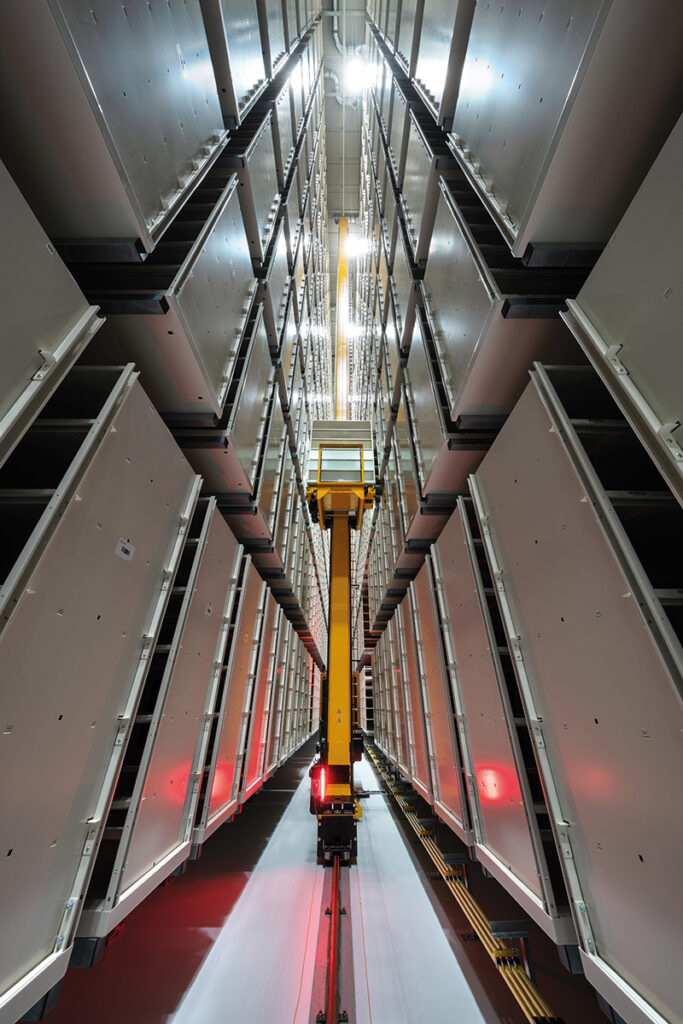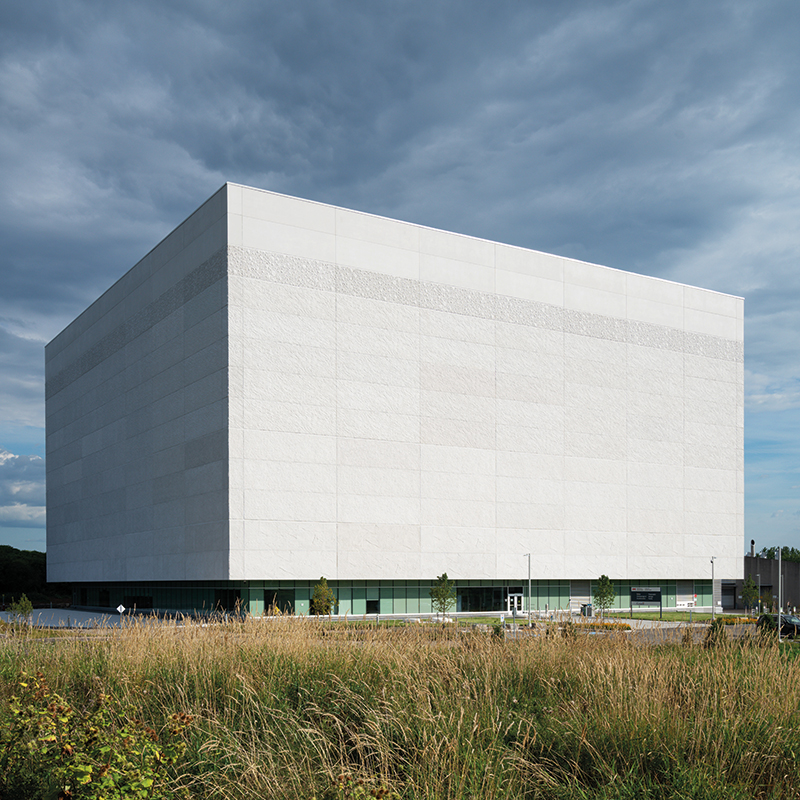Library and Archives Canada’s new Preservation Storage Facility is built to last
The preservation of history is a task that never ends.
But with the recent completion of Library and Archives Canada’s (LAC) new state-of-the-art Preservation Storage Facility in Gatineau, Que.—a space that will provide the conditions required to preserve documents for 500 years—that job became just a little bit easier.
The facility is the first net-zero carbon archival preservation facility in the Americas, and the first special purpose federal facility built to meet the requirements of Canada’s Greening Government Strategy, and the largest automated archival facility in the world.
Plenary Properties Gatineau (PPG)—made up of Plenary Americas, PCL and ENGIE Services, in partnership with B+H Architects, Stantec and Lapalme Rheault Architects—was chosen by the Government of Canada for a public-private partnership to design, build, finance, and maintain the new preservation facility, which was constructed adjacent to the LAC’s existing preservation centre.
“This new, state-of-the-art preservation facility in the National Capital Region will help Canada remain a leader in the preservation and promotion of our invaluable documentary heritage. Our government is confident that this preservation centre will solidify Library and Archives Canada’s place at the forefront of preservation throughout the world, for the benefit of present and future generations,” said Pablo Rodriguez, Minister of Canadian Heritage and Multiculturalism at the facility’s official opening.
The project has been recognized with a pair of awards from the Canadian Council for Public-Private Partnerships, winning the Silver Project Development Award in 2019, and the Gold for the Infrastructure category in 2022.
According to Paul Marion of PCL Construction—the design-build lead for the project—one of the major challenges was meeting the requirements from the National
Capital Commission when it came to the exterior of the building
“The building had to be designed around a form that lent itself well to storage and retrieval. And that really informed the form of the building,” says Marion.
The new archive had to complement rather than overshadow the architecturally significant Preservation Centre, which is now connected to the new Preservation Storage Facility.
“The exterior of the building had to be energy efficient. It had to be something that allowed us to meet all the stringent consumption restrictions that we had for electricity. And had to be aesthetically pleasing—sufficiently pleasing for the NCC to approve the facility in its location,” says Marion.
To achieve the architect’s vision for the façade, which features textures of granite, limestone, sandstone, clay and glacial till, PCL collaborated with the digital media laboratory at Carleton University to develop digital models of the stone textures which were later fabricated into custom molds for the 416 precast concrete panels.
“In an innovative approach, our team worked with the formwork contractor to develop a productive method of using back-to-back blindside foundation formwork to pour large sections of wall, which form the 28-metre-tall archival vaults,” explains Marion. “The insulated precast panels created an energy-efficient environmental barrier from the exterior elements.”

To achieve the goal of preserving documents for 500 years—a new piece of paper stored in 2022 should still be readable in 2522—a state-of-the-art automated storage system was required.
Each of the six 90-foot-tall vaults is equipped with an automated storage and retrieval system, supplied by Dematic. This system consists of a lift and a crane, and it ensures that the archival containers being removed or returned are safe, secure, and accessible.
“There were a number of technical challenges, such as the unique environmental tolerances required for the storage of the archived materials and the need for highly limited noise and vibration levels,” says Marion.
Prior to construction, PCL conducted in-depth research into robotic automatic storage and retrieval systems (ASRS) and reviewed case studies from around the world for various forms of archival storage facilities to familiarize themselves with best practices in their design and construction.
“The research we conducted allowed us to partner with Dematic, the subcontractor for the system. The two protective enclosures surrounding the archival storage spaces were a requirement of the contract and prescribed by LAC,” explains Marion. “Strict temperature and humidity controls were designed to maximize the collection’s storage life. These set points were achieved using dedicated systems that had more than enough backup capacity to maintain the archival environment in case of equipment failure or temporary power outage.”
Some key benefits of the ASRS system included significantly reduced risk of material damage, improved tracking and decreased energy consumption using the highly advanced technology.
“In optimizing our storage space, the ASRS supports our commitment to providing the best preservation conditions for Canada’s documentary heritage, while embracing the challenge of being energy efficient, resilient and sustainable,” said Leslie Weir, Librarian and Archivist of Canada.
When complete, the archival facility will boast a storage capacity of 21,500 cubic metres—almost nine Olympic swimming pools—and provide the facility with the highest level of protection possible. Six ASRS robots will move archival collections between the storage area and the user area, handling them with minimal disruption to the vault’s environment.
That workplace environment during construction was also very challenging, points out Marion.
To mitigate the amount of time workers had to spend working at high levels in constrained space—the vaults measured 90-feet tall and only 30-feet wide—PCL used prefabrication.
“We erected temporary buildings and a roller system that allowed us to assemble the steel rack components and the majority of the sprinkler system in a more productive and safe manner. Then we would transport them to the vaults, roll them in, and flip them up into place.”
Together with LAC’s Preservation Centre, the new Preservation Storage Facility will help to effectively preserve Canada’s significant documents for current and future generations.
LAC Preservation Storage Facility Quick Facts
- The vaults have storage space equivalent to eight and a half Olympic-size swimming pools.
- More than 590,000 containers of published and archival materials (hard copy), microfilms and motion-picture films are being moved into the facility.
- Construction of the new facility began in August 2019 and was completed in June 2022.
- The texture of the 416 concrete panels that cover the facility represents the geological composition of the ground on which the building sits.
- The cost of the implementation of the Gatineau 2 project and the construction of the Preservation Storage Facility and maintenance and management of both buildings for 30 years is estimated at $580 million.
Featured image: The cost of the implementation of the Gatineau 2 project and the construction of the Preservation Storage Facility and maintenance and management of both buildings for 30 years is estimated at $580 million. (Library and Archives Canada)












